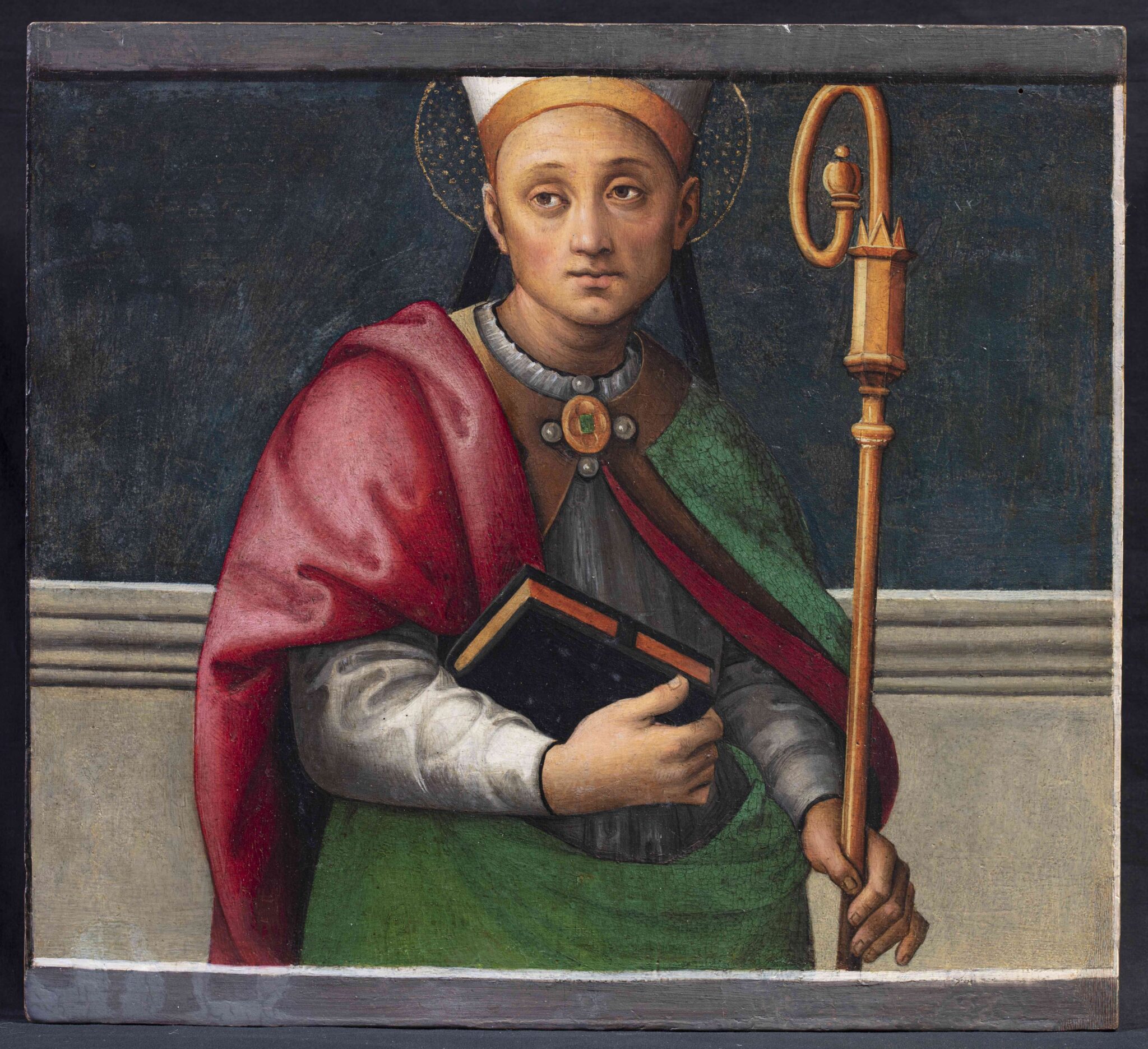From a symbol of martyrdom to that of marriage: the curious story of the Torcolo di San Costanzo.
Studying the first centuries of Christian cult, it is easier to come across the so-called historical martyrologists, in which the names of the saints and the place of their death were reported. Later, to these lists was added the life – of the martyr or of the confessor – and a description of the death: the undoubtedly most famous document is the Geronimian Martyrology.

The Antonines and the anti-imperials
In this ancient document, compiled in Rome in the fourth century, the name of San Costanzo appears, one of the three patrons saint of the city of Perugia together with San Lorenzo and Sant’Ercolano. Traditionally celebrated on January 29th and therefore called “the saint of the great cold”, to indicate the low temperatures of the period. The first Christians were persecuted for their anti-imperial attitude, responsible for a rather tense civil climate, in short, for political crimes. This is the case of Constantius, the first bishop and protector of Perugia.
The consul Lucio made him immerse in a cauldron of boiling water, from which the future saint came out practically unharmed; after being taken to prison, he managed to escape by converting the keepers. Arrested again, he was condemned to beheaded, a penalty that was imposed around 170 in Foligno, in a place known as Il Trivio. It seems that in this area – called the Campaign of Saint Costanzo, there was a church dedicated to him, demolished in 1527.
After martyrdom, Costanzo’s remains were moved to a place called Areola, outside Porta San Pietro in Perugia, and there they found burial. The church, named after him, was consecrated in that area in 1205. It is in that same building that the unmarried girls, every 29 January, asked the image of the saint about their possibilities to get engaged and to marry.
It seems that, for particular games of refraction, the Saint winks at girls destined for marriage, but only to those unmarried and virgins. For the others there was a consolation prize, necessarily donated by the engaged couple: the Torcolo di San Costanzo.

Forms that speak
The shape of this bundt cake, enriched with tasty as rare ingredients, candied citron, raisins, pine nuts, aniseed seeds, recalls a wedding ring; but other interpretations state that it represents the crown of flowers affixed to the reconstituted body of Constantius: a necklace of precious stones untied during the decapitation. For some scholars, the shape of a donut would have only facilitated transport during fairs and markets: you could put several “torcoli” along simple poles. And perhaps, it is no coincidence that San Costanzo, in the official iconography, is represented with a stick. A further interpretation assimilates the hole to the cut neck of the saint, while the five incisions on the surface, which reveal the precious composition, recall the five entrance doors of the city of Perugia. Five are also the gifts donated, every year, by the civil authorities.
Symbols of concord, the laurel wreath from the Municipal Police, the candle from the Mayor, the incense from the Parish Pastoral Council, the “holy wine” and the “torcolo of San Costanzo” from the local artisans, are offered before the traditional illumination inside the Basilica. To follow the Great Fair takes place in Borgo XX Giugno and, of course, the tasting of the delicious torcolo.
The recipe (by Rita Boini)
Ingredients:
- 500 g of flour
- 125 g of sugar
- 100 g of olive oil
- 75 g of candied cedar made into small pieces
- 125 g of raisins
- 50 g of pine nuts
- 12 g of aniseed seeds
- 30 g of brewer’s yeast
- A pinch of salt
Preparation:
Pour the flour on the pastry board, place inside the yeast dissolved in a little ‘warm water, knead the whole flour with warm water in sufficient quantity to obtain a dough from the consistency of the bread and place it in a terrine capable. Cover with a clean cloth and keep it in a warm place away from drafts, at least until the dough volume is doubled. Pour it on the pastry board and add the other ingredients. Work well and give it the shape of a donut, which you will place in a greased pan. Let rise for two to three hours, then bake at 180 °and cook for 40-45 minutes.
The torcolo of San Costanzo was consummated in Perugia on 29 January, in the Patron Saint’s day, Sometimes it was prepared at home, but more often it was bought from bakers, as this is a typical baking cake. The girls from Perugia used to give one, as a gift, to their boyfriend on this occasion. The custom of the torcolo of San Costanzo is still felt in the city and, even now, that it is on the market all year round, on 29 January bakeries and pastry shops are filled with torcoli. Other similar cakes are the torcolo of San Biagio, in Pianello, where it is prepared on the saint Patron’day: 3rd February saint is prepared and the torcolo of St. Joseph, which is consumed in Montone. It differs from the first two only because of the lack of aniseed and due to the fact that it is not consumed for the feast of the patron saint.
Sources:
www.stradadeivinicantico.com
www.turismo.comune.perugia.it
www.santiebeati.it
- Trotta, Diary (gastronomic) of Umbria, Perugia, Aguaplano, 2011.
Voltaire, Philosophical Dictionary, 1764, in https://www.scribd.com/doc/98861647/Voltaire-Dictionary
Eleonora Cesaretti
Latest posts by Eleonora Cesaretti (see all)
- The Deposition of Cannara, a work that ended up in oblivion - April 8, 2025
- Of devotion and chestnut woods: the village of Santa Restituta, a jewel to be discovered - February 11, 2025
- The secret rooms of the small Della Corgna palace - January 9, 2025

